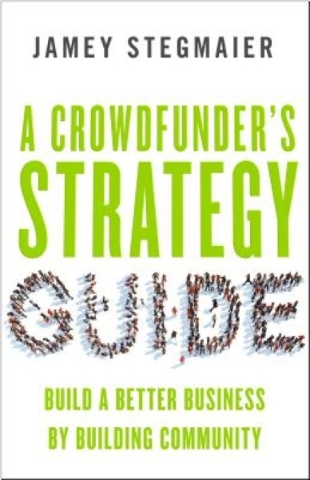
“A Crowdfunder’s Strategy Guide — Build a Better Business by Building Community” by Jamey Stegmaier (Berrett-Koehler Publishers, $19.95).
While many small businesses turn to crowdfunding to raise money, not many attempts are successful. Stegmaier’s seven successful Kickstarter campaigns, and the successful and failed attempts of others, helped him create a crowdfunding template for increasing the odds of success.
Here’s what you will learn:
* Developing a platform for your launch will takes months, not days. Look for information about similar products online (e.g. product sites, crowdfunding sites, sellers, blogs, trade publications, YouTube, etc.). Note their features; read their reviews. Identify your unique value.
At least 90 days before launch, start building a network to spread the word. This starts with a weekly blog (one to three entries per week) that creates interest in your product and provides content useful to its readers. They will tell others. Subscribing to other blogs related to your project and providing comments helps you build a following for yours, too. Send samples of your product to serious followers and others with whom you’ve had close interaction; solicit and listen to their feedback.
* Closely study crowdfunding campaigns that deal with customer demographics similar to those of your product. Pay close attention to their models. Look for their “how.” Offer feedback on preview pages; provide comments on campaign pages. Backing some projects helps, too, because you’ll gain insight about timelines for delivery.
* Create a budget for your project factoring in several different outcomes relative to being able to meet demand on time and ship worldwide. Also remember that you will have to account for collecting and paying state sales tax on online sales. Pay close attention to production scheduling; you don’t want disappointed customers.
Stegmaier’s experience shows that a “keep it simple” approach to your product makes for successful campaigns, too. Adding more options from which backers can choose usually creates problems with manufacturing, cost control and on-time fulfillment.
You also have to decide how much money you need to raise. Don’t expect crowdfunding to cover the expense of a product launch. There are no guarantees that the project will reach its funding goal. Have enough financial skin in the game to ensure there’s an initial stock of product so fulfillment starts quickly. Stegmaier points out that asking for large amounts may turn off potential backers because they won’t believe enough will be raised. They will do the math: Amount asked for divided by price equals the number of backers needed.
Your pre-launch homework isn’t done. You only have one opportunity to make a first impression on potential backers. Hire a pro to design your crowdfunding and Web pages, news releases and emails. Ensure that all your marketing has a connective, consistent theme. Before launch, send news releases to the blogs to which you follow/subscribe and local news outlets and emails to your network. Just as you hired a pro to design your marketing approach, you may want to hire a PR firm to handle media outlets.
Set a realistic deadline for launch day; take into account the time it takes to evaluate comments from those who received samples and those viewing your preview page. Stegmaier points out that, unless there’s seasonality involved with your product, there’s no right or wrong time to launch a campaign. But launching an incomplete project anytime limits its chance for success. When your campaign launches, be prepared to make adjustments that incorporate backers’ feedback.
Check out Stegmaier’s blog at kickstarterlessons.com and Kickstarter’s best practices Facebook page (facebook.com/group/KickstarterBestPractices/).
Jim Pawlak is a nationally syndicated reviewer of business books.